Zaha Hadid Architects models giant sports venue on Hangzhou tea farms
A 60,000-seat football stadium is among the features of the terraced Hangzhou International Sports Centre, which Zaha Hadid Architects is designing in the east of China.
Over 26.39 hectares, the giant sports venue in Hangzhou will comprise three buildings that also accommodate a 19,000-seat indoor arena, an aquatics centre and practice pitches.
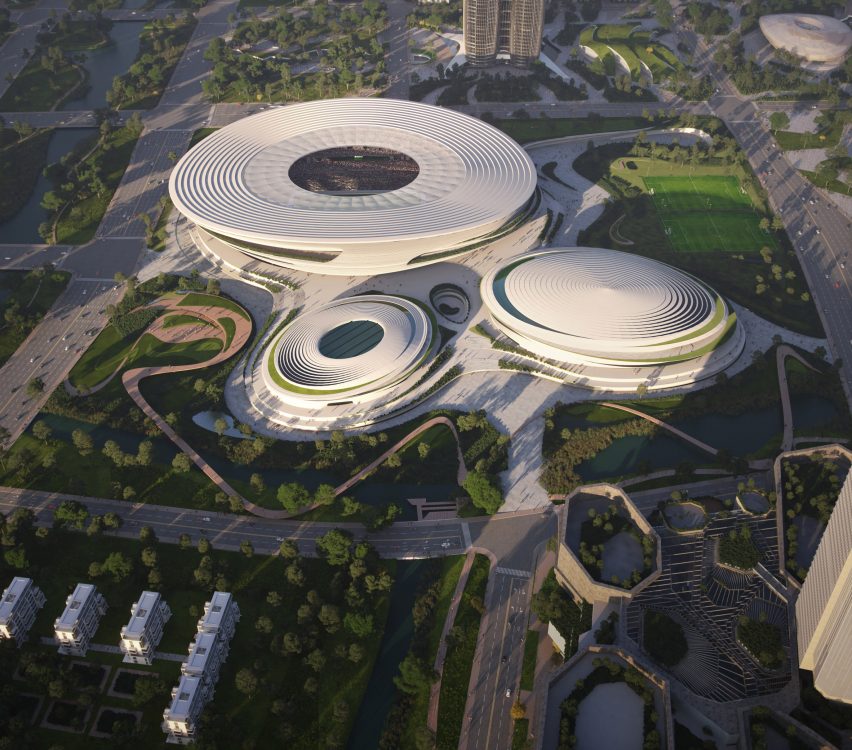
Hangzhou International Sports Centre was designed by Zaha Hadid Architects for the city's Future Science and Technology Cultural District. Its expected completion date is not yet known.
It was commissioned by the cultural district's management committee to serve the city's growing population and will be open for use by both amateur and professional athletes.
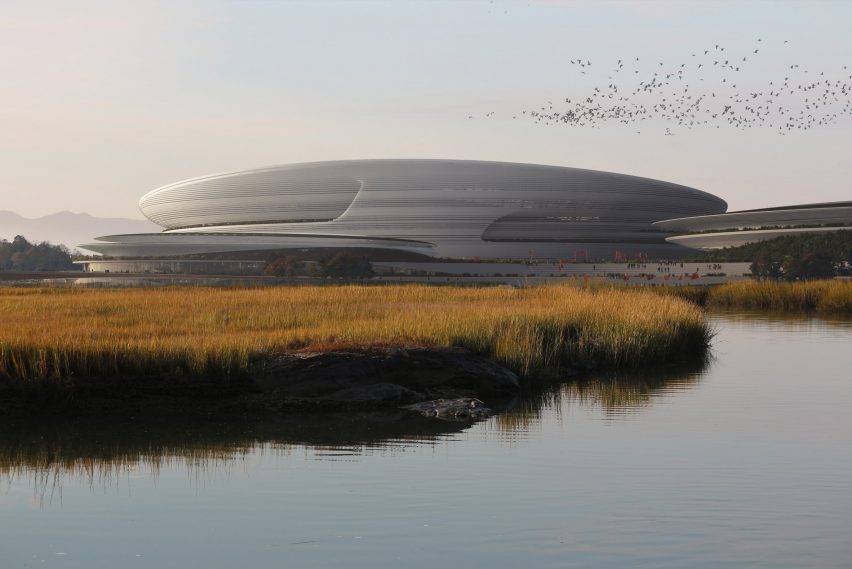
"Accommodating Hangzhou's growing population, the International Sports Centre's design provides a variety of facilities for grassroots players to professional athletes," said Zaha Hadid Architects.
"In contrast to the single-use programming of most large stadiums that only welcome visitors on match days and act as an obstruction to the city's urban fabric when not in use, the many varied sporting, recreational and leisure facilities of Hangzhou International Sports Centre, in addition to its public plazas and riverfront park, ensure the centre will be a popular gathering place for its community throughout each day and evening."
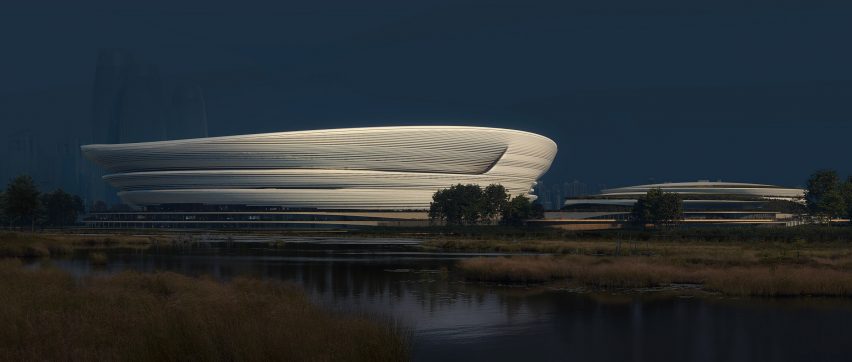
Externally, the three venues will have rounded forms and will be unified by their "striated" edges and a terraced podium that winds between them.
These forms were designed by Zaha Hadid Architects as a nod to the terraced tea farms on the hills surrounding Hangzhou.
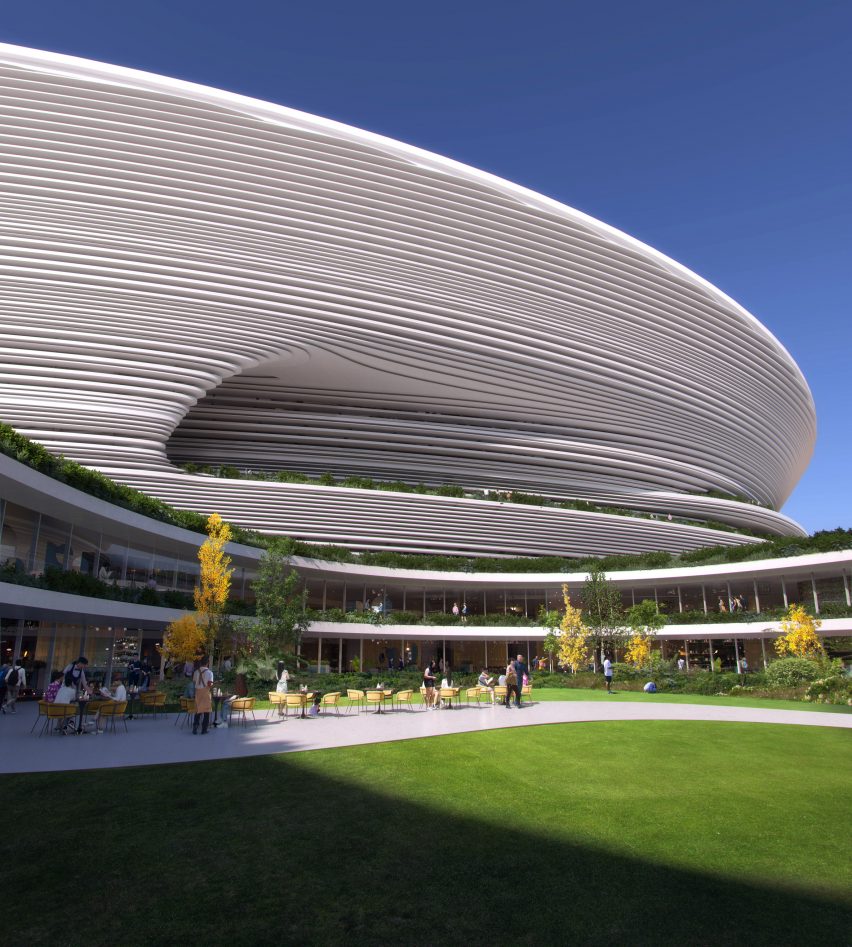
The venues are intended to be as compact as possible, ensuring almost half of the dedicated site is available for transformation into new public spaces.
Among these will be a new riverfront area, in addition to public parks and plazas with access to the city's metro network. The landscape design will also see wetlands introduced along the riverbank that will form part of the district's drainage network.
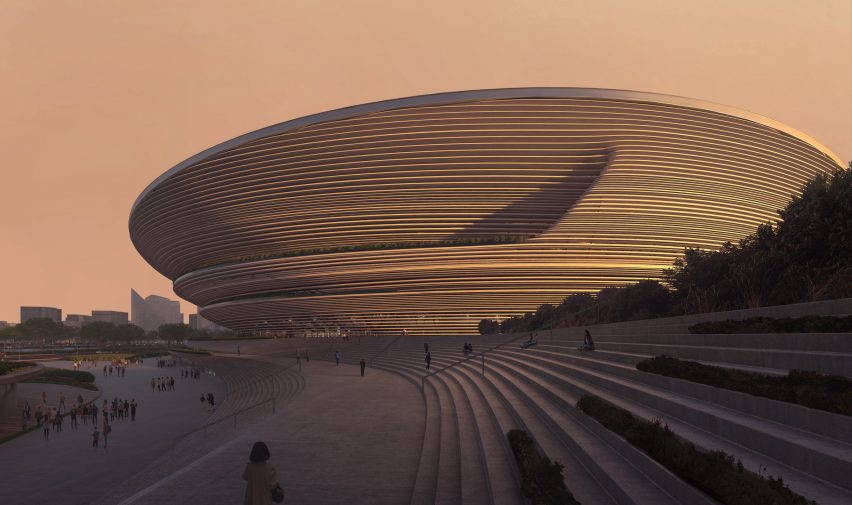
Hangzhou International Sports Centre's largest venue will be the football stadium, which will be positioned on the eastern side of the complex with views over the city.
It will measure 135,000 square metres and contain seats for 60,000 spectators. According to Zaha Hadid Architects, the shape of the stadium will "bring spectators as close as possible to the field of play".
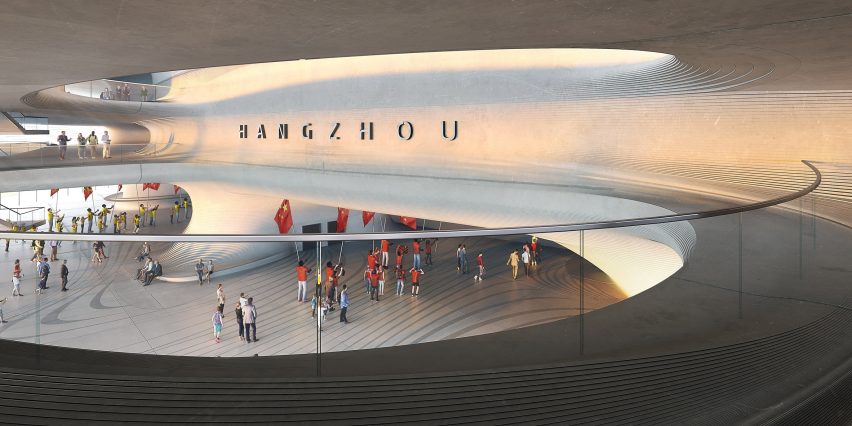
The form of the seating will create undulations in the stadium's facade, which will be lined with louvres that solar shade food kiosks positioned behind them.
These louvres were also designed by Zaha Hadid Architects to contribute to the layered appearance of the complex while allowing passersby to see inside – challenging the usual "solid facades" of conventional sports stadiums.
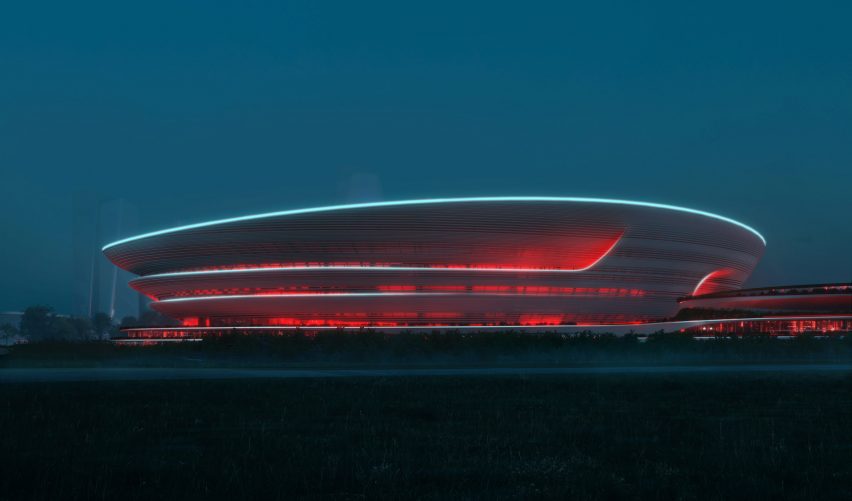
"The stadium's louvred facade blurs the boundary between interior and exterior," said the studio.
"When viewed from a distance, the louvred facade becomes transparent, connecting the public spaces beneath the stadium's seating bowl with the city."
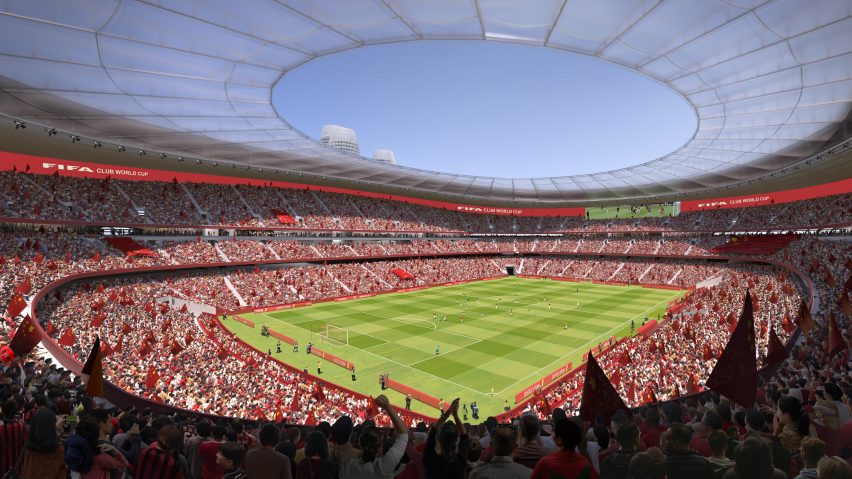
On the west and south sides of the complex will be the two smaller venues, housing the indoor arena and the aquatics centre.
At 74,000 square metres, the indoor arena will have a capacity of 19,000 and the flexibility to be adapted to host various different events, ranging from spectator sports to music concerts.
Meanwhile, the aquatics centre will measure 15,000 square metres and contain two 50-metre pools designed for everything from lessons for local school children to professional competitions. This venue will provide space for up to 800 spectators.
Woven between the venues, the 45,000-square-metre podium will complete the project with ancillary facilities as well as a courtyard and terraces.
Shared between the venues, these will include everything from locker rooms and training halls to shops, restaurants and offices with views over the terraces.
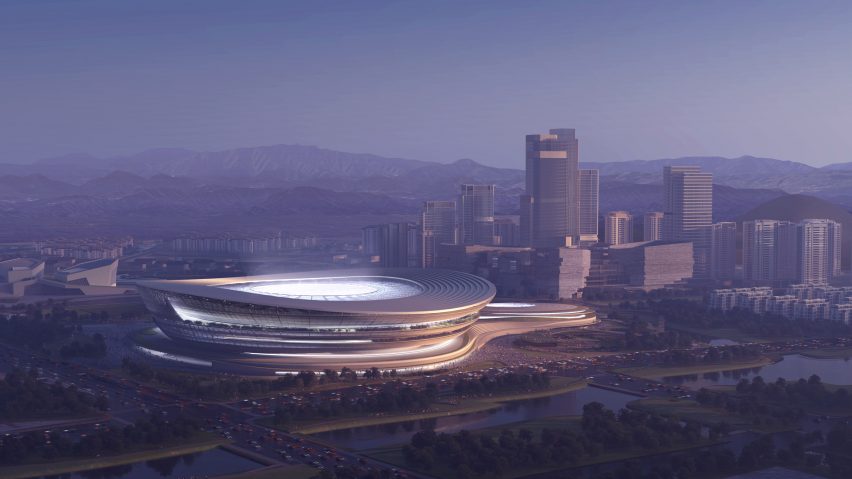
According to Zaha Hadid Architects, the project will make use of recycled and recyclable materials.
Each venue will utilise a hybrid ventilation system, as well as ground source heat pumps and photovoltaics to harvest solar power.
Elsewhere in China, Zaha Hadid Architects is designing the striped expansion of an exhibition centre in Beijing and a pair of supertall skyscrapers linked by planted terraces in Shenzhen.
The studio, which is the eponymous studio of the late architect Zaha Hadid, also recently completed the dune-like Beeah Headquarters in Sharjah.
The animation is by Atchain and the renders are by Proloog unless stated otherwise.
Dezeen is on WeChat!
Click here to read the Chinese version of this article on Dezeen's official WeChat account, where we publish daily architecture and design news and projects in Simplified Chinese.